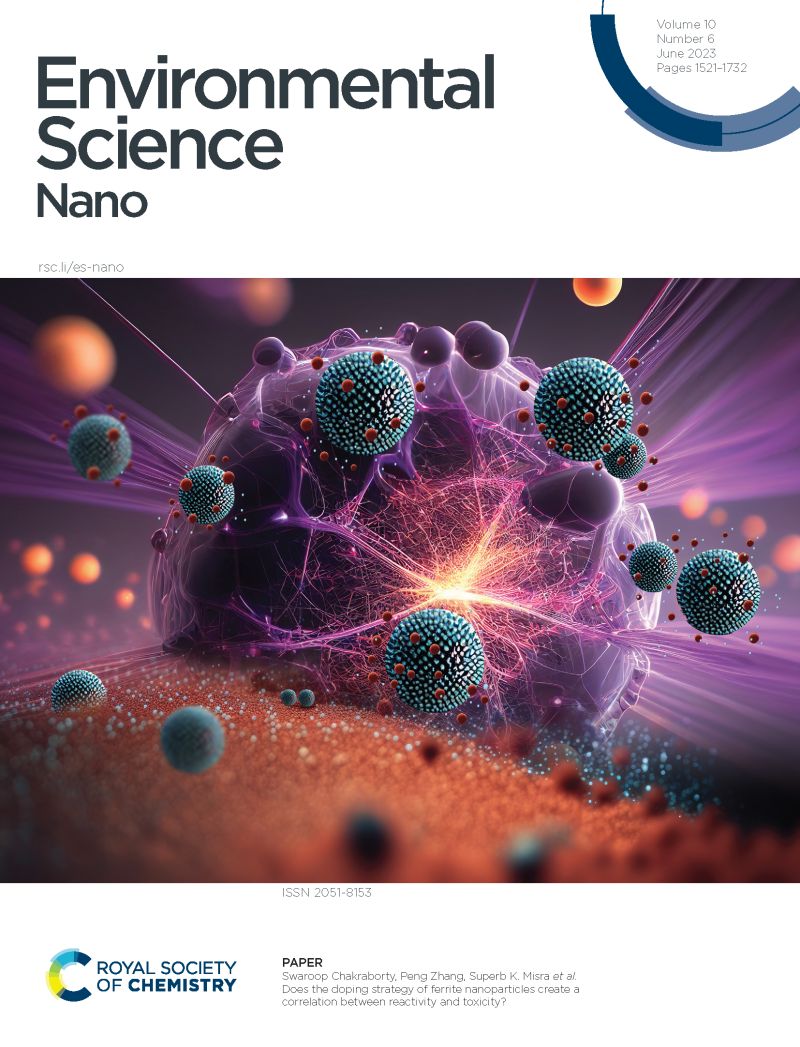Investigation of Depolluting and Antimicrobial Properties of Magnetic AgIO3/Fe3O4@SiO2 Photocatalytic Marine Concrete
IF 5.8
2区 环境科学与生态学
Q1 CHEMISTRY, MULTIDISCIPLINARY
引用次数: 0
Abstract
Visible light photocatalytic concrete represents an emerging technology with substantial potential for mitigating environmental challenges in marine ecosystems. This photocatalytic concrete demonstrates multifunctional capabilities including self-cleaning, decontamination, and antibacterial properties essential for sustainable marine environments. In this study, magnetic AgIO3/Fe3O4@SiO2 was first synthesized and in-situ sprayed onto low porosity underwater non-dispersible concrete fabricated by conduit method. The 56-day compressive strength, cubic and prismatic compressive strength, and impermeability grade of the low porosity underwater non-dispersible concrete are 40.60 MPa, 37.28 MPa, 24.89 MPa and P12-grade, indicating that its suitability for marine infrastructure applications. Moreover, the AgIO3/Fe3O4@SiO2 modified concrete demonstrated photocatalytic performance with 85.1% of tetracycline hydrochloride (TC) degradation within 60 minutes, effectively inactivation of Escherichia Coli (E. coli) cultures in seawater within 2 hours, and 75% formaldehyde decomposition within 4 hours under visible light exposure. These excellent properties can be attributed to the high specific surface area of 517.25 m2/g, narrowed band gap of 1.41eV, Z-scheme charge transfer mechanism and efficient reactive oxygen species (ROS) generation of AgIO3/Fe3O4@SiO2 .Moreover, analysis revealed that seawater chloride ions (Cl- ) undergo conversion to hypochlorite ions (ClO⁻) through superoxide radical (•O₂⁻)-mediated pathways, synergistically facilitating TC degradation. This work provides a sustainable approach for the industrial preparation of multifunctional photocatalytic underwater concrete, with prospective applications in offshore structures for biofilm inhibition and interfacial organic pollutant degradation at air-water boundaries.磁性AgIO3/Fe3O4@SiO2光催化海洋混凝土的除污抗菌性能研究
可见光光催化混凝土是一种新兴技术,在减轻海洋生态系统面临的环境挑战方面具有巨大潜力。这种光催化混凝土具有多功能性,包括对可持续海洋环境至关重要的自清洁、去污和抗菌特性。在本研究中,首先合成了磁性 AgIO3/Fe3O4@SiO2 并将其原位喷涂到用导管法制造的低孔隙率水下不分散混凝土上。低孔隙率水下不分散混凝土的 56 天抗压强度、立方体和棱柱体抗压强度以及抗渗等级分别为 40.60 兆帕、37.28 兆帕、24.89 兆帕和 P12 级,表明其适用于海洋基础设施应用。此外,AgIO3/Fe3O4@SiO2 改性混凝土还具有光催化性能,60 分钟内盐酸四环素(TC)降解率达 85.1%,2 小时内有效灭活海水中的大肠杆菌(E. coli),在可见光照射下 4 小时内甲醛分解率达 75%。AgIO3/Fe3O4@SiO2 具有 517.25 m2/g 的高比表面积、1.41eV 的窄带隙、Z 型电荷转移机制和高效的活性氧(ROS)生成,因此具有这些优异性能。此外,分析表明海水中的氯离子(Cl-)通过超氧自由基(-O₂-)介导的途径转化为次氯酸根离子(ClO-),协同促进了 TC 降解。这项工作为多功能光催化水下混凝土的工业制备提供了一种可持续的方法,有望应用于海上结构的生物膜抑制和空气-水边界的界面有机污染物降解。
本文章由计算机程序翻译,如有差异,请以英文原文为准。
求助全文
约1分钟内获得全文
求助全文
来源期刊

Environmental Science: Nano
CHEMISTRY, MULTIDISCIPLINARY-ENVIRONMENTAL SCIENCES
CiteScore
12.20
自引率
5.50%
发文量
290
审稿时长
2.1 months
期刊介绍:
Environmental Science: Nano serves as a comprehensive and high-impact peer-reviewed source of information on the design and demonstration of engineered nanomaterials for environment-based applications. It also covers the interactions between engineered, natural, and incidental nanomaterials with biological and environmental systems. This scope includes, but is not limited to, the following topic areas:
Novel nanomaterial-based applications for water, air, soil, food, and energy sustainability
Nanomaterial interactions with biological systems and nanotoxicology
Environmental fate, reactivity, and transformations of nanoscale materials
Nanoscale processes in the environment
Sustainable nanotechnology including rational nanomaterial design, life cycle assessment, risk/benefit analysis
 求助内容:
求助内容: 应助结果提醒方式:
应助结果提醒方式:


